Are you looking for ways to grow your business faster?
Content marketing and SEO are both great ways to attract visitors to your site. The only problem is that these tactics can take several months, even years, to build an impressive amount of traffic.
There’s another avenue to success that is much faster.
However, there is also some risk.
I’m talking, of course, about paid advertising. In particular pay-per-click (PPC) advertising, where you pay a network every time your ad is clicked.
You must have a call to action in the ad text. A successful PPC campaign improves advertising quality score, reducing the pay per click costs over time.
With paid advertising, you get the opportunity to reach parts of your target audience that were previously unreachable.
If all you focus on is traditional SEO, it doesn’t matter how high you rank, a large percentage of searchers will likely never see your content based on a natural search query.
But, I get that PPC might be scary.
Ads can get expensive, especially if you’re targeting high-value search engine terms.
On top of that, there are many misconceptions that scare people about PPC more than they should.
Misconception – Margins are razor-thin: Most business owners and marketers try PPC once and lose money or break even. They conclude that there’s no money to be made with pay per click.
But, there’s a steep learning curve to PPC.
Once you get past those initial hurdles and mistakes, you can still achieve solid profit margins if you structure your call to action around enticing landing pages designed to capture data from a specific digital or text ad.
In fact, paid search advertising (the most common type of PPC) is one of the best marketing channels, when it comes to ROI (judged by professional marketers):
One of the main reasons that you can achieve such a good ROI with paid search is because you can target ad copy keywords with high buyer intent. This improves ad rank and even your quality score.
Consider that any query where a searcher is looking to purchase something usually has the maximum number of ads on it (e.g. “buy a toaster” will have several ads on it).
That means that for all of the best keywords (from a revenue point of view), SEO results only get about 60% of the clicks. On top of that, those are the most competitive terms to rank for and the most expensive for PPC ad copy placement.
Obviously, there’s much more to PPC than a call to action from a text ad or search query.
That’s what I want to show you today.
By the end of this post, I don’t think you’ll be scared of PPC. Instead, I think you’ll be ready and excited to give PPC a proper try and grow your business.
I’m going to go over all of the main concepts of PPC that you’ll need to know. Once you understand them, it’s just a matter of digging a bit deeper into each concept and actually trying them out.
Are you ready to learn something that could take your business to a new level of profitability?
4 Reasons to give PPC a try
How do you know if a PPC campaign is right for you?
Well, if you’re looking for what PPC ad copy can offer, you’ll know that you’re a good fit.
And, in my experience, most businesses that are not growing as fast as they’d like can really benefit from even a small investment in PPC.
Reason #1 – It’s predictable: I often write about SEO and content marketing, because they’re such great ways to drive website traffic (and capture leads).
But, one of the major drawbacks of both strategies is that the results are largely out of your hands.
You may write a post that goes viral and gets tens of thousands of visitors. Or, you might write a post that gets 20 views. There are things you can do over time to minimize this variance, but it will always be there.
Additionally, your organic search engine traffic could change drastically at any time. Maybe you get outranked for a few major keywords or get hit with a Google penalty.
So, while you can expect those sources of traffic to grow, you don’t know how much or how fast. And, you also have to be prepared for setbacks.
With a PPC campaign, on the other hand, your visitors are directly tied to how much you spend and the search engine algorithm is less of a factor.
Spend more, get more visitors.
If you want exactly 10,000 visitors, you can get exactly 10,000 visitors.
Reason #2 – You get results faster than from inbound marketing: I’ve already briefly mentioned this. Even if you’re a good marketer, it’s still going to take 6-12 months to gain major traction with inbound marketing strategies.
With PPC, you can drive visitors to your website in hours, not months.
Reason #3 – It’s extremely easy to scale: How do you scale content marketing? You create more content.
But, if you’re producing most of the content yourself and also promoting that content, there’s not a whole lot of extra time to do more.
You could hire someone to help you out, but then you need to worry about them matching your content quality expectations.
With a PPC campaign, if you’re having good results and want to scale up your efforts, all that you do is raise your budget a bit(or target additional keywords/audiences):
Reason #4 – More time to focus on the product: This is one commonly overlooked aspect of PPC. It doesn’t take much time to run a PPC campaign.
As you’ll see, there’s a bit of setup time, especially when you’re new to PPC, but you’ll get much quicker as you gain comfort with starting and managing campaigns.
Once a campaign is running profitably, it takes far less than an hour a day to keep it running.
Therefore, you can spend the rest of your time either creating content or improving your product so search query and pay per click visitors convert. Remember the call to action is paramount from ad text to content.
There’s much more than just Google Ads
If you’re not very experienced with PPC, you probably equate PPC with Google Ads.
You’re not far off, because Ads is by far the biggest advertising network.
Google makes hundreds of millions per day through Ads:
You can get traffic in just about any niche because Google has so much traffic.
Additionally, Google is amazing for conversions, since you can target keywords with high commercial intent.
However, Google is not your only option.
Some businesses thrive on Ads, while others struggle to make a profit. Then, when they try a different PPC network, they have great success.
The best network for you and your business will depend on your knowledge, niche, audience, product, and many other factors. The only way to define your best network is to give a few different ones a try.
Keep an open mind and consider other options.
Here are some of the other biggest PPC campaign networks that are fairly beginner-friendly and might be worth a try.
Bing: Bing is nowhere near the size of Google, but by normal measurements, Bing/Yahoo! is still huge for everything from a text ad to banners.
Its advertising network is also well-developed and offers many of the same benefits as Google Ads.
However, Bing also has a lower cost per click (CPC) and often converts just as well. Obviously, this means that it’s easier to run a profitable PPC ad copy campaign.
For example, WordStream recently noted that almost all of their clients were able to get lower CPCs on Bing’s network (about 33% cheaper).
If you’re struggling with the high cost of Google Ads, you might have a good bit less competition on Bing without any big sacrifices.
Facebook Ads: The giant social media site has its own advertising platform and it’s pretty simple to use ad text and pictures for click advertising success.
You can place ads aimed directly at your content, landing pages, or to get “likes” for any of your shares.
For this article, I’m going to assume that you’re looking to drive traffic back to your website.
Paid advertising on social media isn’t based on keywords, so text ad campaigns are not successful. You can’t target someone at the exact moment they want to buy a toaster. However, you can look at their interests and demographic information to connect with your target audience.
If you combine content marketing with Facebook advertising, you can create a powerful funnel that will lead to sales.
LinkedIn Ads: While LinkedIn Ads work similarly to Facebook, the users act very different when it comes to a call to action.
Since it’s more of a “professional” network, users often visit the site in the context of their jobs. They look for opportunities to network, hire, get hired and grow their businesses.
Even though LinkedIn isn’t as big as Facebook, case studies have shown that LinkedIn is, by far, the best network to advertise on if you’re trying to drive B2B sales.
LinkedIn Ads provide a unique opportunity to connect with those in charge of purchasing decisions for other businesses.
The art of PPC – Part 1: Channel your inner copywriter (or lose money)
Once you pick a network to focus your PPC efforts on, the next step is to set up your first project.
While it varies based on the network you choose, there are generally 3 elements to setting up PPC projects:
- Ads – In terms of your project scope, the individual ads are the smallest. You need to create physical ads that will be shown to users.
- Ad groups – To keep things separated, you should create at least one ad group per product you sell. Within each ad group, you can test different ads to find the best one.
- Campaigns – A campaign can contain as many ad groups as you’d like. It encompasses your PPC efforts for all of your products. For example, you might run a Christmas advertising campaign and create different ad groups for each of your products.
It’s a simple hierarchy. Think of it like folders on your computer. You have one main folder for a campaign on your desktop, with multiple folders inside it for each product you have (ad groups), and finally the png files for each ad you create inside the correct folder.
Each ad in every level needs quality PPC ad copy (ad text) that results in positive click-through rates. Only testing will help you determine an ad rank or hierarchy and which ads to nix completely.
Start with campaign and ad group settings: When setting up any PPC project, you always start from the top and work your way down.
Again, it will depend on the network, but in general, there are only a few simple fields that you will need to fill out here. And, you can usually change them later.
First is your bid strategy, as well as the budget you’d like to spend (usually per day). Typically, you’ll want to manually bid for clicks, but you can also test built-in optimization settings (they are supposed to maximize clicks for your given budget).
I advise you to start really small at first. Even a few dollars a day is enough to get started with while you learn the ins and outs of the platform.
As you try out different ads and create profitable ones, you can increase your budget.
Next up are the advanced settings, which not all networks have.
You can schedule a start and end date for the campaign (or leave it to continuously run).
In Google Ads, in particular, you also have the option of rotating ads within a particular ad group. You need to do this to split test different variations of ads, which I’ll talk about shortly.
The basic elements of most ads: There are usually up to 4 main parts of the actual ads you place.
- Headline – The title of your content/landing page (doesn’t have to match exactly, but better if it does)
- Description – Why the user should click on your link (urgent call to action)
- URL/link – Where are you sending the user when they click this text ad component
- Network-specific elements – Things like sitelinks, likes, and shares.
Some ad networks are more text ad-based, like search engines, while social media PPC networks are typically more image-based (and those images get a better click-through rate):
Your click-through rate depends heavily on the headline and/or description of your ad.
There are 2 approaches:
- Relevance – On search results, ads that are most relevant to the query will get the best click-through rate.
- Curiosity – On social networks, ads that invoke the most curiosity will get the best click-through rate (it can’t be relevance since users aren’t looking for anything in particular and are targeted differently).
It’s not easy making great headlines and descriptions, which is why great copywriters are paid so much for ad text. However, you can learn, if you practice writing powerful headlines and great descriptions over time.
Finally, you’ll often face limitations on how much space you have. For example, on Google Ads, you’re limited to 25 characters for the headline:
Always look up the character limit of the network that you’re using.
Money is made or lost in targeting: Okay, I skipped a step. I know you’re thinking: “what happened to ad groups?”.
When setting up ad groups, there are 2 main components: giving them names and picking who you’ll target with ads.
I’ll assume that you can think of names for your ad groups, but the targeting in the search query is a bit trickier.
If you target the wrong people, it doesn’t matter how good your ads are, you won’t make money because no one will do a search query.
For search engines, you’ll have to choose keywords to show your ads for. There are 3 main types of keywords (with a few variants):
If you pick the exact keywords you want your ad to show up for, you’ll have the highest conversion rate.
However, you might end up missing out on some great related ad text keywords, which is why you might want to use phrase match keywords as well.
Phrase match keywords will show your ad anytime a search query contains the keyword that you’ve chosen.
This can be bad because you might show up for “buy coffee table cleaning supplies” if your keyword was “buy coffee table”. Assuming that your landing page sells coffee tables, this would never be profitable.
What about social networks? Since there aren’t any keywords or search query data, you target users by their interests and demographics.
For example, if someone “likes” a page about coffee tables, they might be interested in buying a new coffee table.
Alternatively, if you’re selling driving training manuals, it might make sense to target ad text to those that are 15 or 16 years old, as they’ll be learning to drive soon. That is a big call to action.
On all of these big social networks, it’s pretty simple to select demographics and interests.
While picking interests isn’t difficult, picking the right ones is to achieve a high ad rank. It will take you some practice to get good at it, but here’s a guide to picking demographics and interests to get you started.
The art of PPC – Part 2: Your ads are only half the battle
Alright, so you’ve set up a killer PPC ad copy campaign. You’re all done, right?
Not quite.
If you’ve done well in that first step, you now have people clicking through to whatever landing page you linked the ad to, hopefully at a relatively low cost.
If you’re advertising on search engine results, you want to provide the searcher with their ideal landing page, which is often a sales page if you picked your search query keywords correctly.
For example, if you advertised on the keyword “buy coffee maker”…
It’s obvious that the searcher wants to buy a coffee maker. They’d probably appreciate a few different choices. But their call to action is clear: need coffee.
In this case, the landing page is perfect, because it’s a sales page for coffee makers. It’s going to convert visitors into buyers at a fairly high rate.
But, as we saw earlier, users on social networks don’t have any obvious commercial intent so ad text can seem out of place or annoying.
If you’re selling coffee makers, you can’t really link directly to a sales page.
Instead, it’s best to combine social PPC ad copy with email (the original online text ad) marketing.
Offer some sort of lead magnet on your landing page to capture your target’s email address. Then, send them valuable content before finally pitching them on your product. Make a strong call to action with urgency.
There are 2 main approaches that you can test, both of which can be successful.
The first is to use a standard, simple landing page. Offer them a bonus in your ad text and have them sign up for your list to get it. You should be able to get high conversion rates if your landing page is good and your targeting is solid (30%+):
The downside of this method is that many will unsubscribe right away or forget who you are.
The alternative method is to send them to one of your most popular posts. If you use content upgrades, you might have a post that converts at 10-20%, which would be perfect for this.
Since they’ve already read your content, they will likely convert better a little later on with the right PPC ad copy.
However, you should try both, since either approach can be fruitful, depending on your specific audience and business.
The dream of “set it and forget” is a myth
Some marketers aren’t scared of PPC ad copy at all when they hear about it.
In fact, they’re the opposite – they’re too excited about it.
They hear that all you need to do is create a profitable campaign and then increase your budget and you’ll make millions.
The truth is, it’s not that easy (even though those results might eventually be possible).
ROI always comes first: The fact is, unless you have a profitable ad, you can’t ever scale up. If you’re spending a lot on an ad that has a poor return on investment (ROI), you’ll end up quickly losing a ton of money, never improve your quality score and hate PPC ad copy forever.
Getting a profitable ad is one of the hardest parts of the process. Many never get past this stage.
All networks have some sort of reporting dashboard that will show you how much you’re paying per click, and possibly per conversion.
To determine your ROI, you need to divide your return (profit per sale), by the cost of getting that sale (conversion).
If you make $10 off of a conversion and can get a conversion for $5, you’re in great shape and should spend as much as you can on that campaign.
But, if it takes $15 per conversion, you can’t run it profitably. Your goal for your first ads should be to get around breakeven ($9.5-10.5 per conversion) and then optimize it further (more on that soon).
Once you have a profitable campaign, there’s a catch. You can only scale up to a certain maximum before you’ll see diminishing returns. This because there are only so many people searching for something or with a specific set of interests.
From there, you’ll have to pick new keywords and interests to target. As you go further away from your optimal keyword/interest groups, your conversion rate will frequently decrease (because the users are less targeted).
At some point, increasing the number of clicks you get will no longer increase your overall profit. That’s why you can’t just scale up indefinitely and make millions.
Split testing is not optional: When it comes to PPC advertising, reducing the cost of your clicks by even a few percentage points can make a huge difference.
Split testing involves making 2 identical ads where you only change one element, like the headline or description. That way, you can know if that one change increases or decreases your results. It may also have no effect.
What split testing will do is help you to optimize your click-through rate (CTR). Most advertising networks factor your CTR into how much you pay per click. For example, it is one of the factors in an Ads’ quality score.
On top of split testing your ads, you should also split test your landing pages.
When a visitor lands on your page, you want to have the best chance of converting them into a subscriber or customer.
If you’ve never done split testing before, it will take a bit of time to learn, but the results will be worth it.
Once you know what you’re doing, this ongoing split testing won’t take much time. If you plan well and work efficiently, you’ll only have to spend a few minutes a day (on average) running your split tests.
All ads go stale: Say you optimize an ad as much as you can and are making a healthy profit on your advertising campaign, are you set for life?
Unfortunately, no.
What happens over time is that your PPC campaign will become stale and your ROI will decline as your ad rank does.
The main factor behind this is that competitors will catch up to you (sometimes even copying your ads) and that you often have a limited pool of target users. As you start advertising to the same users over and over, your ads will become less effective.
There’s not too much you that can do to combat this, other than to proactively create new ad campaigns as your current ads appear to be getting less effective.
How to use remarketing to explode your business
What kind of conversion rate have you achieved on your website?
If you’ve done a good job at conversion optimization, you might achieve a conversion rate (ending in a purchase) of up to 10% (which is excellent).
The problem with that is that 90% of visitors who are interested in what you sell, leave your site and never end up buying.
Wouldn’t it be great if you could specifically advertise to the 90% who are already familiar with your brand and products?
That’s what remarketing is. You put a pixel on your website that tracks who visits. If they don’t end up buying something, you can use that tracking information to show them targeted ads on a PPC network (Google Ads, Facebook, etc.).
And, when I say targeted, I mean it. If you had a sales page about coffee tables, you could target visitors to that page who didn’t buy with ads about coffee tables.
Some businesses are able to achieve an obscene ROI using remarketing.
The next time you’re browsing flights and hotel deals on a travel site and you then see an ad for hotel deals in your Facebook feed, this is exactly what’s happening.
You essentially have 2 options. You can create a remarketing campaign on the PPC network of your choice, or you can create a remarketing campaign through a network like Adroll to target several networks at once.
The benefit of the second option is that all of your visitors don’t use Facebook. But, it’s very likely that they use Facebook or Twitter or LinkedIn or…you get the picture. Since time is an important factor, casting a wide net can be effective.
Conclusion
I understand why PPC advertising can seem scary at first, but it’s really not.
Using PPC to drive business to your website is a great way to diversify your traffic sources and to protect yourself from any variance you might encounter with organic SEO or content marketing.
If you’re excited and ready to get started with PPC, I suggest starting with one network, for now. Get familiar with it and do some research so that you avoid common PPC mistakes that cost you money.
Finally, be patient.
Being able to create profitable ad campaigns is a skill. It will take time and practice to develop, but it can be well worth it.
If there are any parts of PPC that you still don’t quite understand, let me know by leaving any questions in a comment below.

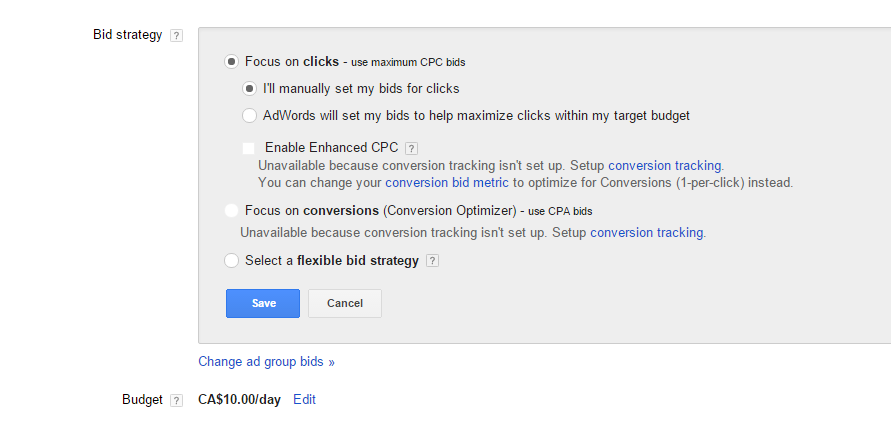
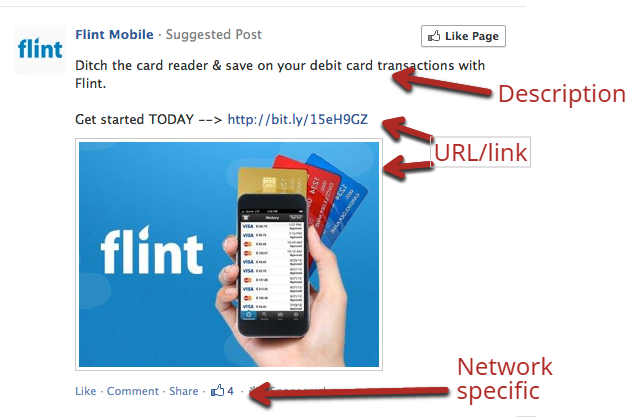
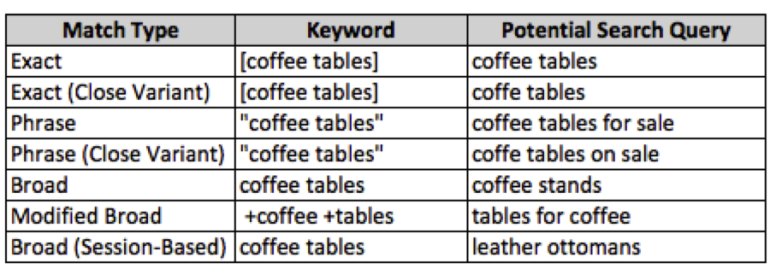
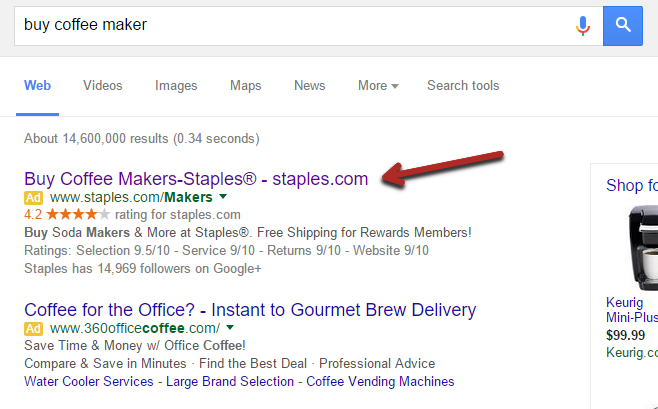
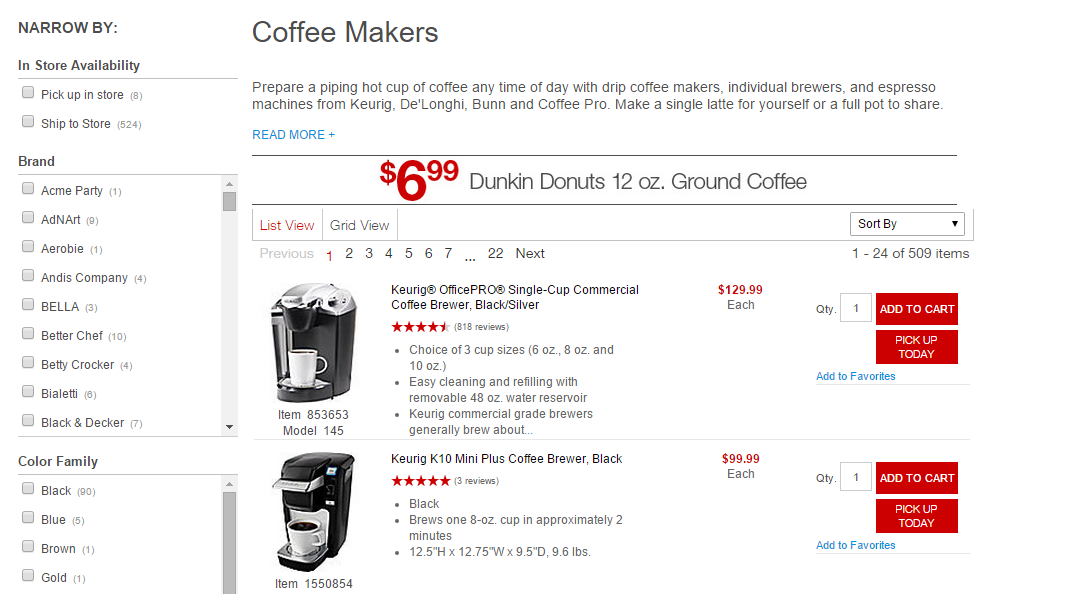

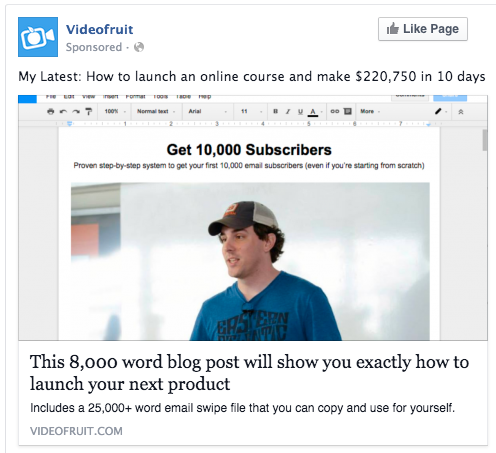


Comments (48)